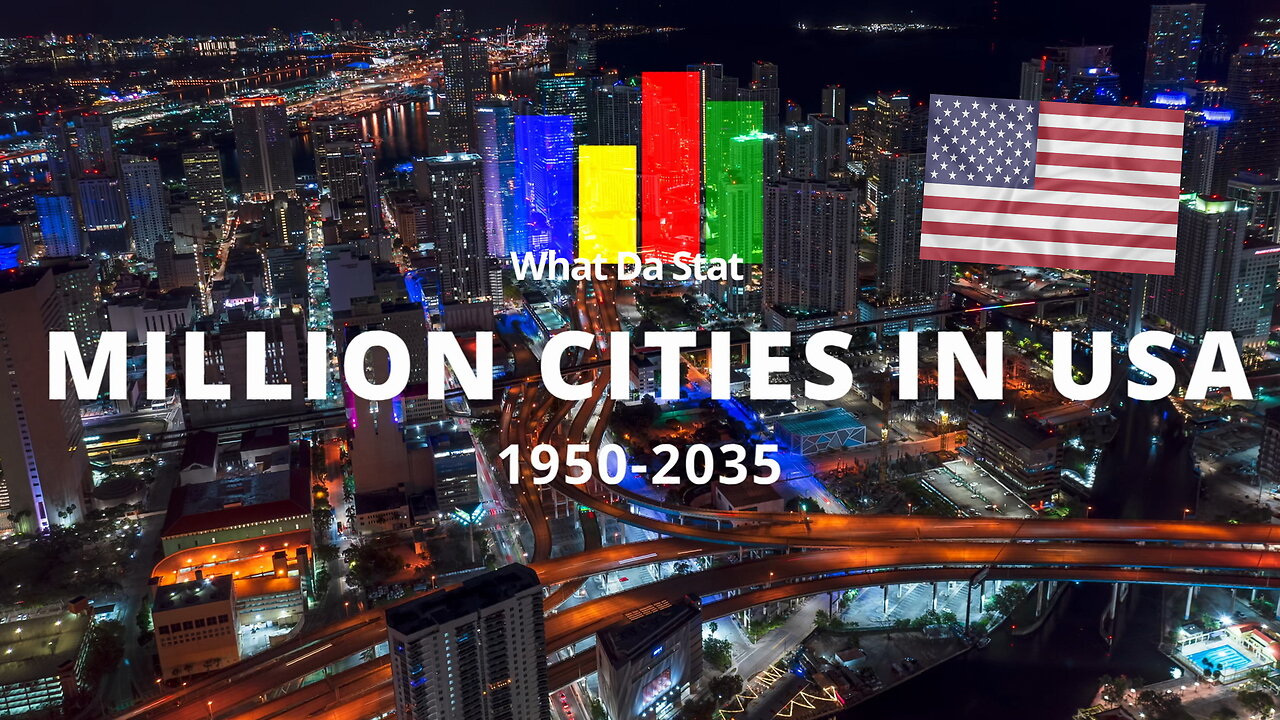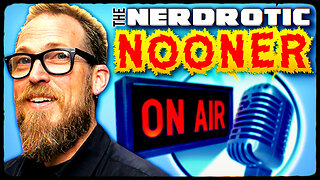Premium Only Content

Million Cities in USA 1950-2035
This bar chart race shows urban agglomerations in USA with over one million urban population, and urbanization in percentage and total urban population, from 1950 to projected in 2035.
Albers USA projection is used as map depiction.
San Juan, Puerto Rico, is not included.
Many Rust Belt cities in the United States, experienced significant population fluctuations over the years. Buffalo, New York, is the only city that exceeded one million urban population and later dropping below.
Since 1950, urbanization in the USA has undergone significant transformation, marked by the rise of million cities, characterized by urban areas with populations exceeding one million people. This trend reflects the growing concentration of population and economic activity in metropolitan regions.
In 1950, the USA had only a handful of million cities, primarily centered around established hubs like New York City, Chicago, and Los Angeles. However, with the advent of suburbanization and the expansion of industries, especially in technology and finance, the number of million cities has increased steadily.
By the late 20th and early 21st centuries, the USA saw a proliferation of million cities across various regions, including the Northeast, Midwest, South, and West. Cities like Houston, Philadelphia, Phoenix, and San Diego joined the ranks of million cities, driven by factors such as job opportunities, infrastructure development, and lifestyle preferences.
This urbanization trend has been fueled by several factors, including:
Economic Growth: Urban areas have been the engines of economic growth, attracting businesses, investments, and skilled labor.
Infrastructure Development: Investments in transportation, communication, and utilities have facilitated urban expansion and connectivity.
Demographic Shifts: Migration from rural to urban areas, as well as natural population growth, has contributed to the urbanization process.
Technological Advancements: Innovations in transportation, communication, and automation have made urban living more convenient and attractive.
The rise of million cities has led to both opportunities and challenges. On one hand, these urban centers offer diverse cultural amenities, educational opportunities, and access to services. On the other hand, they face issues such as traffic congestion, housing affordability, and environmental degradation.
Despite these challenges, the trend of urbanization in the USA continues, with projections suggesting further growth of million cities and the consolidation of metropolitan regions as primary drivers of economic and social development.
Data sources and projections: World Bank and UN
Diamond Ace - California Dreaming https://soundcloud.com/diamond-ace-music/california-dreaming
Data visualization created with flourish.studio https://flourish.studio
-
 LIVE
LIVE
The Mike Schwartz Show
2 hours agoTHE MIKE SCHWARTZ SHOW Evening Edition 09-01-2025
93 watching -
 46:25
46:25
The Quartering
7 hours agoMeta PC Winner, Trump Ruins Libs Dark Fantasy & Raja Jackson Case Heats Up!
127K56 -
 LIVE
LIVE
Rallied
5 hours ago $4.88 earnedWarzone Challenges w/ Doc & Bob
188 watching -
 DVR
DVR
StoneMountain64
5 hours agoNew Missions for Battlefield 6 Unlocks (+New Mouse and Keyboard)
31.4K1 -
 2:09:47
2:09:47
Nerdrotic
10 hours ago $6.30 earnedHollywood's Long Dark Summer of the Soul - Nerdrotic Nooner 511
70.3K3 -
 1:36:05
1:36:05
Side Scrollers Podcast
7 hours agoStreamer ATTACKS Men Then Cries Victim + Pronoun Rant Anniversary + More | Side Scrollers
51.5K -
 12:06
12:06
Liberty Hangout
1 day agoDemocrat Woman Can't Define 'Woman'
64.7K88 -
 8:56:27
8:56:27
GritsGG
10 hours agoRumble Customs! 3515 Ws! 🫡!
91K2 -
 38:39
38:39
Grant Stinchfield
8 hours ago $3.36 earnedHow Local TV News LOST Its Soul
55.9K5 -
 2:09:51
2:09:51
Badlands Media
18 hours agoBadlands Daily: Sept. 1, 2025 – Trump vs. Big Pharma, Giuliani Crash, and Mortgage Fraud Fallout
88.3K55